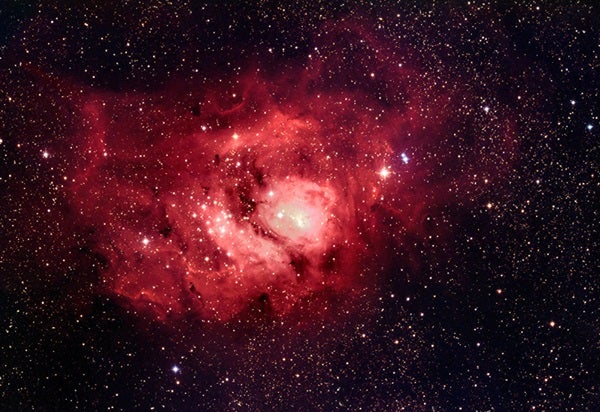HII regions are large clouds of mostly ionized hydrogen (unionized hydrogen is called HI). As you hint at, these areas form when hot young stars emit ultraviolet radiation that knocks electrons off nearby hydrogen atoms in the surrounding gas. When you observe an HII region, you’re looking at a stellar nursery.
Often, one of those unbound electrons will meet an electron-free hydrogen atom (which is just a proton). Opposites attract, and thus they recombine. However, the electron is energized and needs to fall to a lower energy state. As it does this, it emits radiation of specific wavelengths depending on what energy level it started at and how far it’s falling. One of the most common drops is from the third to the second level. This process emits a photon with a wavelength of 656.3 nanometers, which is firmly in the red part of the visible spectrum. Scientists call this observed emission the Hydrogen-alpha line.
— Liz Kruesi, Associate Editor










